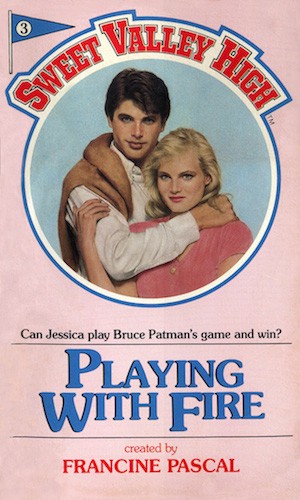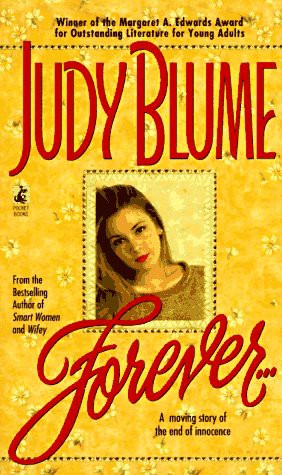Beyond Slut-Shaming: In Praise of the “Bad Girls” of Young Adult Literature
by Jennifer Mathieu

I was in tenth grade in Mrs. Leinfelder’s English class when I had to read The Scarlet Letter by Nathaniel Hawthorne. I was the kind of dutiful student who actually read the book — not just the CliffsNotes — and I remember being super annoyed by both the heavy-handed symbolism (let me guess, Roger Chillingworth as in chilling as in evil) as well as the plot. I didn’t want to sit around reading about this poor Hester Prynne lady and her quiet dignity. I wanted her to demand fair treatment and to kick a little ass.
I make an allusion to The Scarlet Letter in my own young adult novel, The Truth About Alice, when one of the main characters mentions having to read it for his English class. (Okay, so maybe someone could accuse me of being as heavy-handed as Hawthorne). My book is about a girl who becomes the pariah of her small town after rumors start that she slept with two guys in one night and then contributes to the death of one of those boys — the town’s football star — when she sends him sexual texts. While I was writing it, I realized maybe Hawthorne had a point. Our society, even in 2014, doesn’t exactly create the most conducive environment for slut-shamed ladies to seek justice.
My Alice doesn’t feel she can fight back against the powers of her small town, but I hope my novel will add to the conversation about teenage girls and sexuality and how they’re portrayed in teen lit — a conversation I’ve been having with myself since I read Sweet Valley High back in middle school.
Ah, Sweet Valley. If you’re a lady of a certain age, you remember Jessica and Elizabeth Wakefield — the beautiful blond twin sisters with the “peaches-and-cream” complexions. (I never fully understood what that meant, but it sure sounded pretty. And delicious.) For those of you too young to remember these Francine Pascal classics, let me sum it up — Jessica was the “bad” twin because she was boy-crazy and Elizabeth was the “good” twin because she wasn’t. Surprise, surprise.
I still remember how Sweet Valley High #3 (Playing With Fire) got passed around all us sixth grade girls and how we, in furtive whispers, discussed the scene where Jessica let Bruce Patman undo her bikini top and then she went out into the woods with him. (“It talks about the leaves getting crushed under their bodies when they lie down on the ground,” my friend warned me, her eyes wide.)
Lie down on the ground cuz they were, like, gonna do it? Woah! But of course Jessica never does go all the way, at least not while her character is in high school. It’s clear to my adult eyes that Pascal wanted Jessica to be bad but not too bad. Boy-crazy but not, like, a total slut. Gah! No wonder so many women my age grew up with super warped ideas about sex and body image. Blame those peaches-and-cream girls.
But if there was ever an antidote to Sweet Valley, it came from one of the original queens of YA — Judy. Do I even have to mention her last name? Judy Blume’s 1975 classic Forever simply changed everything. I didn’t get my hands on it until after the Sweet Valley days — probably because my Catholic school wouldn’t have allowed it in the library — but I remember reading and rereading it once I was aware of its existence. Blume wrote the book after her teenage daughter asked for a story about two teens who have sex “without either of them having to die.” And that’s what Forever is all about. Katherine, the protagonist, is a fully formed character. A real girl with flaws and a funny grandmother and good friends. She falls in love with a boy named Michael. He’s a nice guy, he cares about her, she takes responsibility for herself and gets on the Pill, and then they have a sexual relationship that is as fulfilling for Katherine as it is for Michael. The idea that a girl could get satisfaction out of having sex — that it wasn’t just about letting the boy take off a bikini top or laying you out on a bunch of dead leaves and that it didn’t mean you were “a bad girl” — blew my teenage lady mind.
I picked up young adult literature again in my late twenties when I started teaching adolescents, and I was pleased to discover that Judy Blume’s legacy lives on in the work of more contemporary authors. There are so many books out there now that address teenage girl sexuality in a much more honest and authentic way than when I was growing up, but two that I loved in particular are Rachel Cohn’s 2002 Gingerbread and E. Lockhart’s Ruby Oliver series.
The protagonist of Gingerbread is a snarky rich girl named Cyd Charisse who’s been kicked out of boarding school and has a sweet boyfriend named Shrimp who drives a Pinto. Have I sold you on Cyd yet? She speaks frankly about being sexually active (Shrimp is a “safety boy” who takes care of buying their condoms), and dealing with an uptight mom and a biological father she barely knows. What I love about Gingerbread is that Cyd Charisse is complicated. She’s “a girl with a past” (semi-spoiler here — she had an abortion while with a previous boyfriend), but Cohn never paints her as a Jessica Wakefield-type bad girl or fallen angel. She’s just a real girl trying to figure out who she is and what she wants, and as a reader I loved watching her do just that.

But if I had to pick one girl who got me writing young adult lit instead of just reading it, it would have to be Ruby Oliver of E. Lockhart’s quartet of Ruby Oliver books that started with 2005’s The Boyfriend List. Ruby is a girl who loves vintage clothes and old movies and lives on a houseboat with her eccentric parents. She attends a prestigious school called Tate Prep on scholarship, and in the first book in the series she bluntly informs the reader that she’s “became a famous slut” and is now a social outcast who’s been dumped by all her friends and her boyfriend because of vicious rumors. Your heart breaks for Ruby even as she makes you laugh with her wry and true observations about life as a teenage girl. (“I was hoping there’d be a set of guidelines handed out in Sex Ed class, but Sex Ed — when I finally got to take it — was all about biology and birth control and nothing about anything that actually goes on between people. Like how to tell what it means when someone forgets to call you when he said he would, or what to do when someone gropes your boob in a movie theater.”)
We follow Ruby through high school and cheer her on as she deals with the fallout from what happens to her in book one and as she matures and develops a serious relationship. In the final book, it’s intimated that she and her longtime boyfriend have sex (“And the rest of what happened is nobody’s business but ours.”) and as a reader I was reminded of Katherine from Judy Blume’s Forever. Ruby is a fully-drawn young woman who finds sex and boys complicated and intimidating, fascinating and thrilling. I just adore her because I see her in the faces of the teenage girls I teach each day. She’s real.
In some ways, we haven’t moved on very much from the Puritanical leanings of our American ancestors. We still have a tendency to address the sexuality of young women with a good girl versus bad girl approach. But fortunately, our young adult lit has moved on from the black and white days of Jessica and Elizabeth. Many authors are addressing sexuality and how we talk about girls who are sexually active in a candid and honest way. For that, I’m grateful.
Other YA novels that address teenage girl sexuality and slut-shaming
Story of a Girl by Sara Zarr: When 13-year-old Deanna Lambert is caught having sex with her older brother’s friend in the backseat of a car, she is branded the school slut and has to deal with what happens next. A heartbreaking read.
Not That Kind of Girl by Siobhan Vivian: Natalie Sterling wants to be student council president and she wants to be sexually active on her terms. An examination of what it means to be a “good girl.”
Stealing Parker by Miranda Kenneally: After her mother comes out and leaves her father, Parker Shelton’s picture perfect life is turned upside down, and she begins to earn a not-so-good reputation. How can she figure out what’s right for her?
Jennifer Mathieu started writing stories when she was in kindergarten and now teaches English to middle and high schoolers. She lives in Texas with her husband, her son, her dog, and two cats. Nothing bad has ever been written on the bathroom stall about Jennifer. At least she doesn’t think so. The Truth About Alice is Jennifer’s debut novel. Say hi to her on Twitter @jenmathieu.